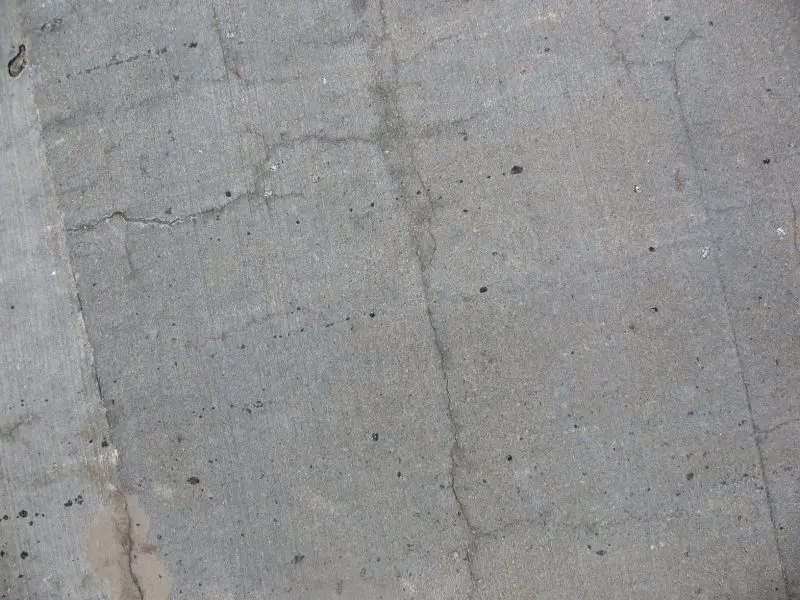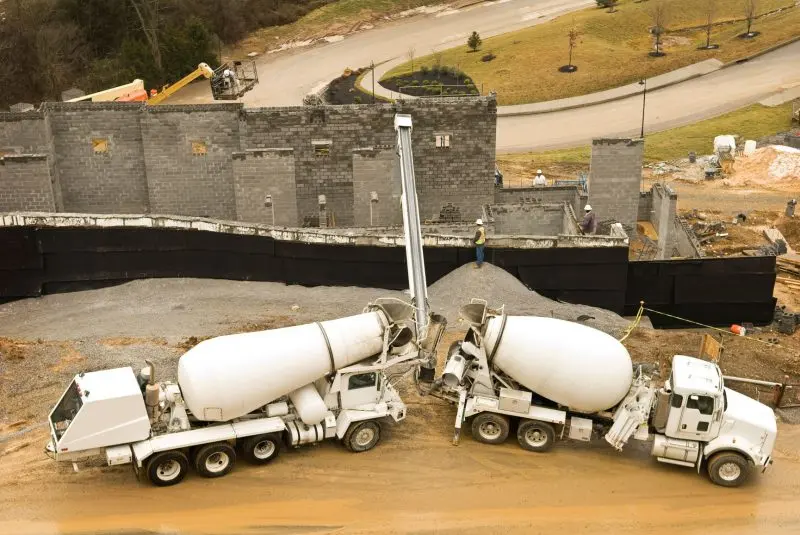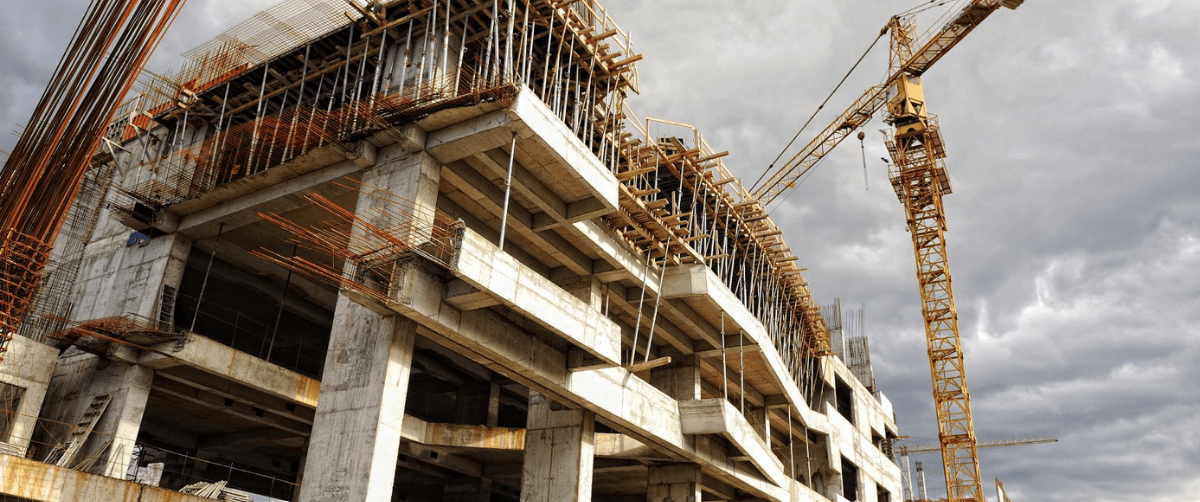Concrete remains one of the most popular materials in construction and is second only to water in terms of material consumption around the globe. However, drawbacks like the material's high carbon impact can make it unattractive for some projects.
The cement industry is one of the leading producers of carbon dioxide. Growing consumer awareness of climate change and the environmental impact of construction has some clients looking for alternatives to materials that rely on cement.
There is a growing range of concrete alternatives. These materials provide similar benefits as concrete, like strength, durability, and longevity, but at a lower carbon cost, with less environmental impact, and often with an appealing and distinctive appearance.

Concrete has been used in construction for many years, but often, viable alternatives are available.
1. Ferrock
Ferrock is a carbon-negative concrete alternative. The material's name comes from ferrous rock, but it is primarily composed of waste steel dust and ground silica glass.
The material generates significantly less carbon dioxide than concrete. It's also solid --- around five times more sturdy than Portland cement. It's also flexible and can bend without breaking due to compression or seismic action.
On the construction site, the material sets faster than concrete, making it practical for jobs where speed is necessary. The material can be hard to source due to its novelty, but it makes it an excellent alternative to concrete in areas where it is available.
A similar material, ashcrete, uses waste fly ash from coal burning operations and offers similar benefits as ferrock.
Recycled materials like these are quickly becoming some of the most popular building materials available. If increasing production makes the material easier to source over the next few years, it could become a valuable alternative to concrete.
2. Rammed Earth
Rammed earth is made by compacting dampened subsoil between temporary formwork. The world, once cured, is strong, durable, and resistant to the elements with the proper treatment. It can be further strengthened with construction techniques like rebar and steel frames.
Because the mixture of subsoil needed for rammed earth is readily available on many construction sites, it can sometimes be as easy to source as concrete --- or even more manageable.
Construction crews require minimal training on the material to build new structures using it. Building a rammed earth structure is a labor-intensive process, meaning that labor costs for a building may be higher when rammed earth is used. A crew will also need at least one skilled laborer to lead the construction process.
The material also has a unique visual appearance. It's multi-colored, and with the layers of soil visible in the final product, it makes a good choice for clients who want a distinctive building facade or interior walls.
Like ferrock, the material's use is rare. Still, several high-profile construction projects in the past few years, like the rammed earth walls at Bushey Cemetery, have experimented with rammed earth.
The material's exotic look and environmental benefits make it an excellent concrete alternative for construction companies, architects, and designers with clients interested in unusual and eco-friendly building designs.

Traditional concrete being poured at a construction site.
3. Straw Bales
Like rammed earth, straw bales are a construction material with a long history. While they aren't used often in modern construction, they have strength and durability comparable to concrete, making them an effective alternative to concrete blockwork in certain situations.
The bales are typically used as insulation or to provide structural support. Straw bales are naturally fire-resistant and have insulative solid properties, though they can be susceptible to rot, making them less practical in especially damp or humid climates.
Compared to concrete, straw bales can take up a significant amount of space compared to other materials and may need to be more practical to transport to and around construction sites. Using equipment like skid steers when moving the material on construction sites can make the material much more practical, however.
4. Timbercrete
Timbercrete is made from a mixture of waste sawdust and cement. It's lighter than concrete, and because it reduces the cement necessary for each brick or slab, it's also less carbon-intensive. It can be comparably strong and weather-resistant depending on the ratio of sawdust to cement.
Because the material requires cement, it is only partially eco-friendly. However, using sawdust as an additive helps reduce the amount of cement that would otherwise be necessary. It also provides another valuable recycling option for sawdust which is sometimes landfilled and often burnt for fuel, releasing atmospheric carbon that can take new growth as much as a decade to reabsorb.
5. Hempcrete
This material is made from a bio-composite of hemp shives --- a waste product generated when processing hemp into fiber --- and lime, sand, or pozzolans.
Like other concrete alternatives, it has a compressive strength and lifespan comparable to concrete. It also generates significantly less carbon than concrete. Like ferrock, it can be regarded as carbon-negative because hemp stores a large amount of atmospheric carbon as it is grown.
6. Greencrete
Greencrete is an umbrella term for several eco-friendly materials meant to mimic the structural properties of concrete. As a construction material, greencrete has yet to be widely used --- but construction companies in several experimental projects have used it.
In practice, greencrete is typically made from recycled materials, like used plastics and polystyrene.
These materials can be easily found at landfill sites and have helped to enable quick construction of new structures, like a 40-bed ICU, built to help handle a surge in COVID-19 cases in South Africa.
Finding Sustainable Alternatives to Concrete
For most construction companies, concrete will remain a popular building material --- especially for substructure construction. But for every project, there's often a suitable substitute for concrete that's comparable in utility and has less of a carbon footprint.
Alternatives made from recycled materials --- like ferrock, ashcrete, timber create, and hempcrete --- tend to require less carbon than concrete and also help to recycle waste materials like steel dust and chaff.
While these materials aren't always accessible to source, in areas where they are readily available, they may help a construction company reduce its carbon footprint or provide eco-friendly alternatives to clients.
If these materials become more widely produced --- and more widely available as a result --- they could provide even greater utility in the future.
Explore BricsCAD
Download BricsCAD Free Trial | Sign Up For News & Updates | Shop Online For BricsCAD Desktop Software


